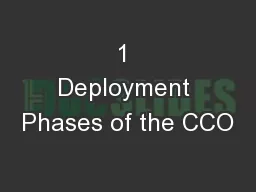PPT-Quantifying the Impact of Deployment Practices on Interplan
Author : kittie-lecroy | Published Date : 2017-06-04
Freight Volatility Kurn Ma Manish Kumar Agenda Project Motivation Over 5000 trucking companies 400000 trucks went out of business in 2012 There are about 8000
Presentation Embed Code
Download Presentation
Download Presentation The PPT/PDF document "Quantifying the Impact of Deployment Pra..." is the property of its rightful owner. Permission is granted to download and print the materials on this website for personal, non-commercial use only, and to display it on your personal computer provided you do not modify the materials and that you retain all copyright notices contained in the materials. By downloading content from our website, you accept the terms of this agreement.
Quantifying the Impact of Deployment Practices on Interplan: Transcript
Download Rules Of Document
"Quantifying the Impact of Deployment Practices on Interplan"The content belongs to its owner. You may download and print it for personal use, without modification, and keep all copyright notices. By downloading, you agree to these terms.
Related Documents














